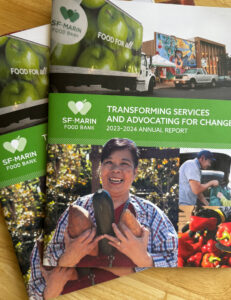 Jean Baker has a joyful smile and ebullient spirit, and both seem to shine prominently on the cover page of the Food Bank’s 2023-24 Annual Report. Now retired, and focused on family and her faith, for years Jean served as a steadfast connection between the Food Bank and participants who came to a food pantry at her church in the Mission District in San Francisco.
Jean Baker has a joyful smile and ebullient spirit, and both seem to shine prominently on the cover page of the Food Bank’s 2023-24 Annual Report. Now retired, and focused on family and her faith, for years Jean served as a steadfast connection between the Food Bank and participants who came to a food pantry at her church in the Mission District in San Francisco.
Beginnings
In 1976, Jean Baker immigrated to the US from the Philippines with no money, job, or family in the area. “When I first came here being an immigrant, I struggled to survive. Every penny I saved so I can buy food. I didn’t know about government help. I worked part-time here, part-time there, because I couldn’t get a regular job. All I knew was to survive, get work, get paid, and buy your food,” she shared. Jean went on to secure full-time work and raise her three kids — but her experiences of struggle shaped her desire to ensure others wouldn’t undergo the same hardships. “My family back home, they engaged in a lot of social welfare in the church, helping others,” Jean recalls. “So, when I had the opportunity here, I decided to do what my parents were doing.”
Transformative Leadership
17 years ago, Jean was attending church when her priest asked if there were any volunteers to help staff their new food pantry. At the start, other church members took charge of the program, but soon, Jean, who would become affectionately nicknamed ‘Mama Jean’ because of her caring nature, was asked to take the lead. “I accepted because I see a lot of homeless people,” she explains. “They need resources, they need food. Food is the essence of life. So, I dedicated myself to doing this kind of work.”
And dedicated she was. Every Saturday at 6:30 a.m., Jean would meet a Food Bank delivery truck at the pantry. A core group of volunteers — many unhoused community members and participants — helped her unload pallets of food. But Jean quickly noticed they could run the pantry more efficiently outside in the church’s garden. Her idea for a farmer’s market-style set-up in the church courtyard allowed participants to enjoy the fresh air while choosing from healthy, nutritious food supplied by the Food Bank. Rain or shine, Jean and her team shared groceries with 175 households each week.
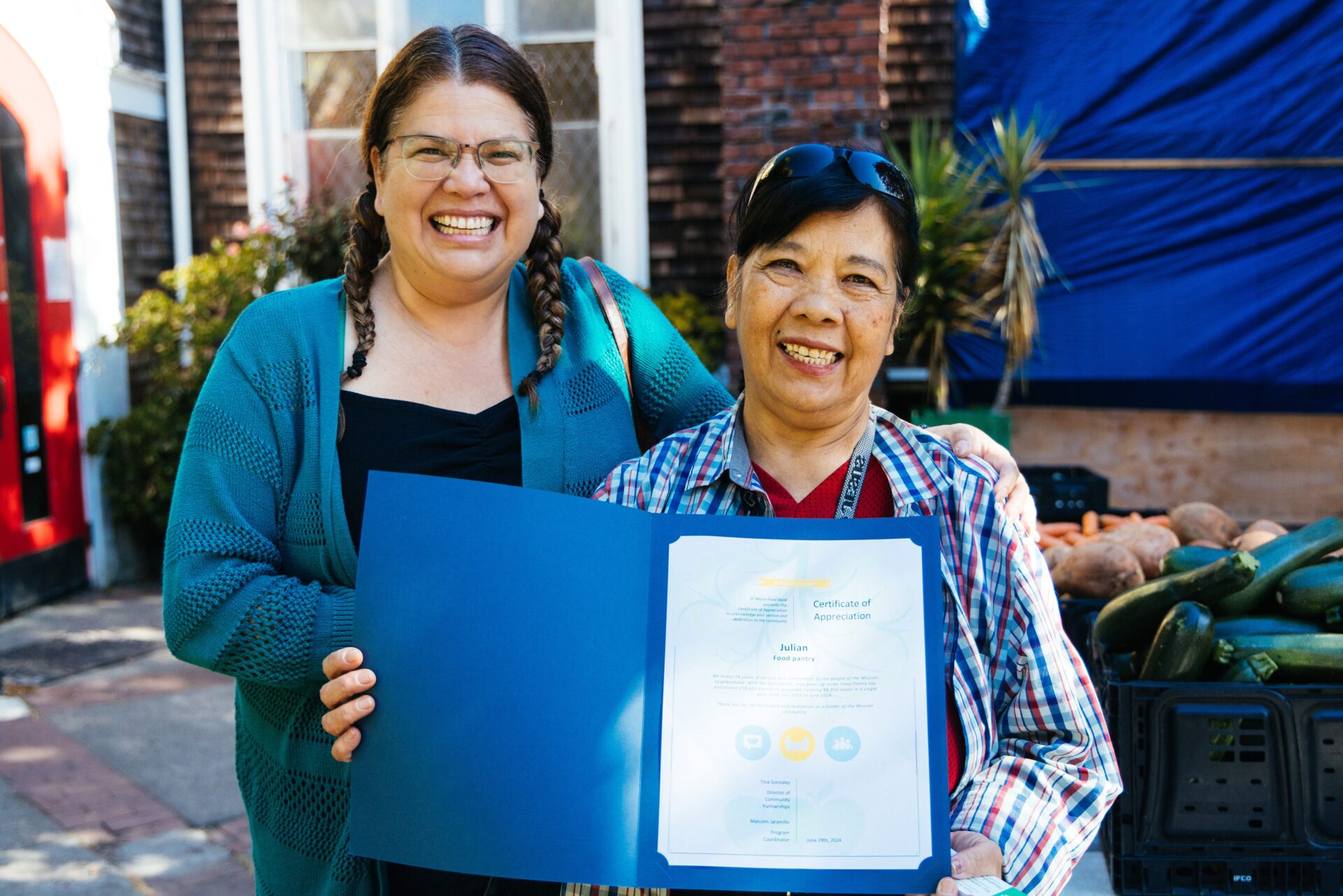
For Tina Gonzales, Director of Community Partnerships, individuals like Mama Jean are unsung heroes who rightfully deserve our appreciation. “These are actually pillars of the community doing the work for free!” observed Tina. Because committed individuals like Jean accomplish so much with little infrastructure (she doesn’t regularly use a smartphone), having direct face-to-face connections is key.
“We don’t want them to say yes to everything because they will. But are they overwhelmed? Do they have enough support, or are they biting off more than they can chew? Sometimes, we’ve got to go have a cup of coffee with them or have a friendly visit just to see how they’re doing,” says Tina.
A good percentage of network pantries serving food are faith-based and feeding people is part of their ministry. “I think for someone like Jean, this is her life work. So, we have people who fit the category of like, ‘this is my nine to five job, and I run a pantry.’ Then, we have people like Jean who are more like, ‘This is my calling, and this is how I give back.'”
End of an Era
Sadly, after 16 years, her church announced the hard decision to close the pantry last June. “It was heartbreaking,” recalled Jean, with a hushed voice. But as she had for the past 16 years, she handed out food to her neighbors on the last day of pantry service. The pantry closure was not what Jean hoped for. But she still attends church services and volunteers to tend to the garden. Presently, Jean is taking time to find ways to continue serving the community she loves. Until then, she can reflect on her experience with a smile: “Every Saturday, we met [at] the same place, doing work like a happy family. All we got here are a lot of good memories.”
With Appreciation
Another good memory for Jean was a much-deserved honor from the Food Bank. On the closure date, in recognition of her longstanding leadership and partnership as a pantry coordinator, Jean was presented with a Certificate of Appreciation for her 16 years of service to our participants and helping the community. The praise drew smiles from all in attendance, including Tina, and a beaming smile from Jean herself.
With Mother’s Day just ahead of us and in recognition of Asian American and Pacific Islander Heritage Month, we thank you, Mama Jean, for your generosity, inspired calling to help others, and tremendous service to the Mission community. You are appreciated.


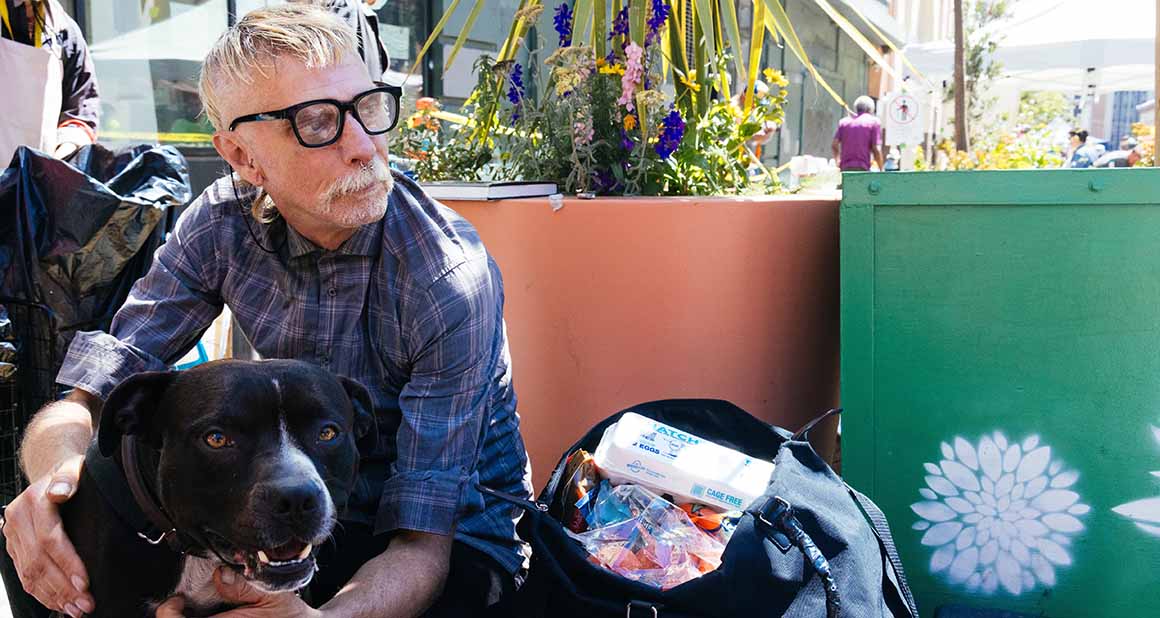
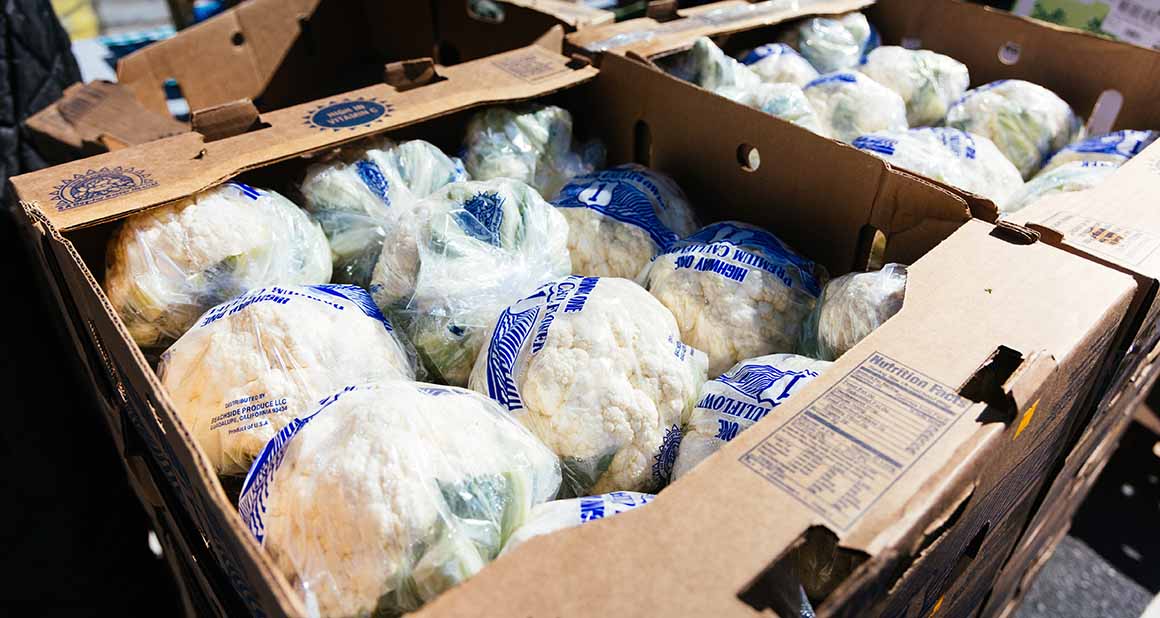 During this period, he rescued le Roi — emaciated and severely abused — from the streets. Nursing le Roi back to health became his mission. “I put him on a high protein, high caloric, high fat diet,” Todd said. With the money the pantry saved him on groceries, he was able to buy quality dog food. Fully recovered, le Roi now “picks up his own leash and walks himself. He plays basketball and body surfs,” Todd beamed.
During this period, he rescued le Roi — emaciated and severely abused — from the streets. Nursing le Roi back to health became his mission. “I put him on a high protein, high caloric, high fat diet,” Todd said. With the money the pantry saved him on groceries, he was able to buy quality dog food. Fully recovered, le Roi now “picks up his own leash and walks himself. He plays basketball and body surfs,” Todd beamed.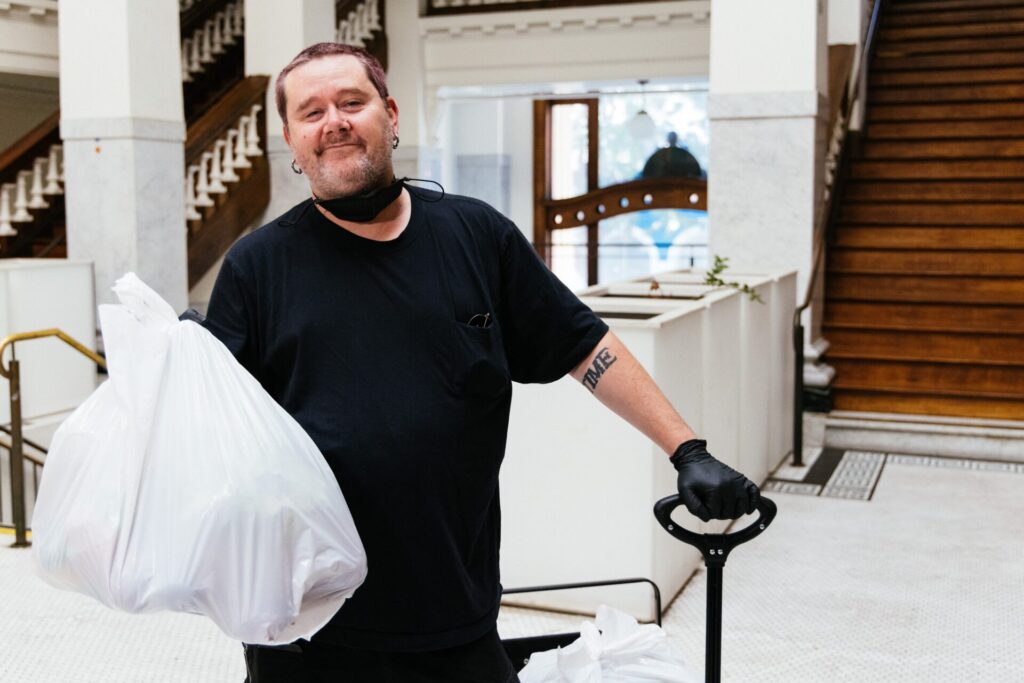
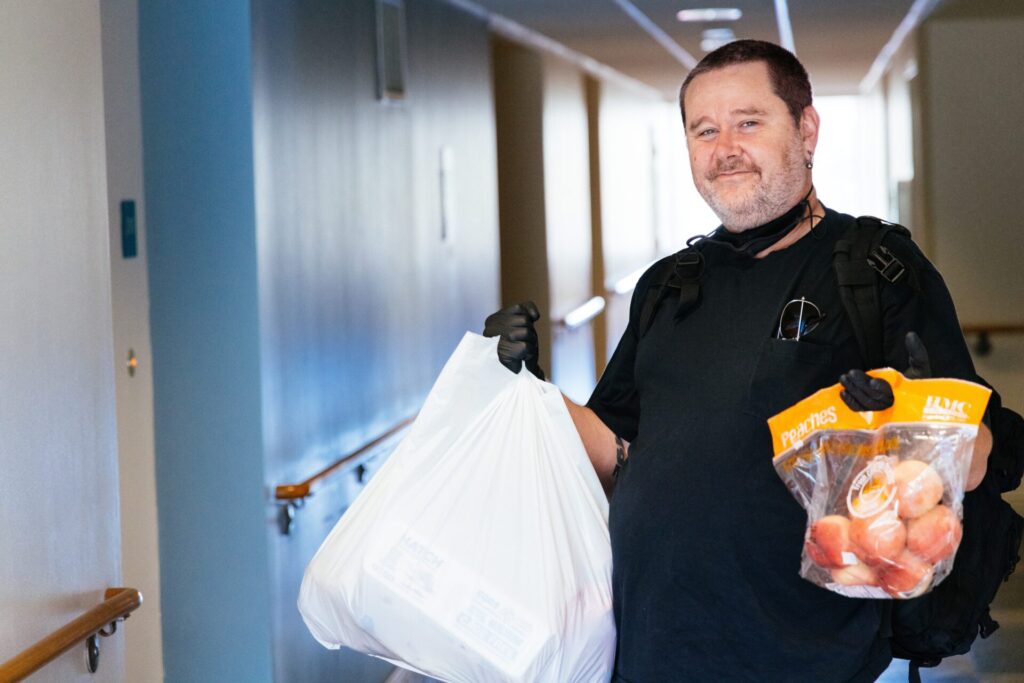
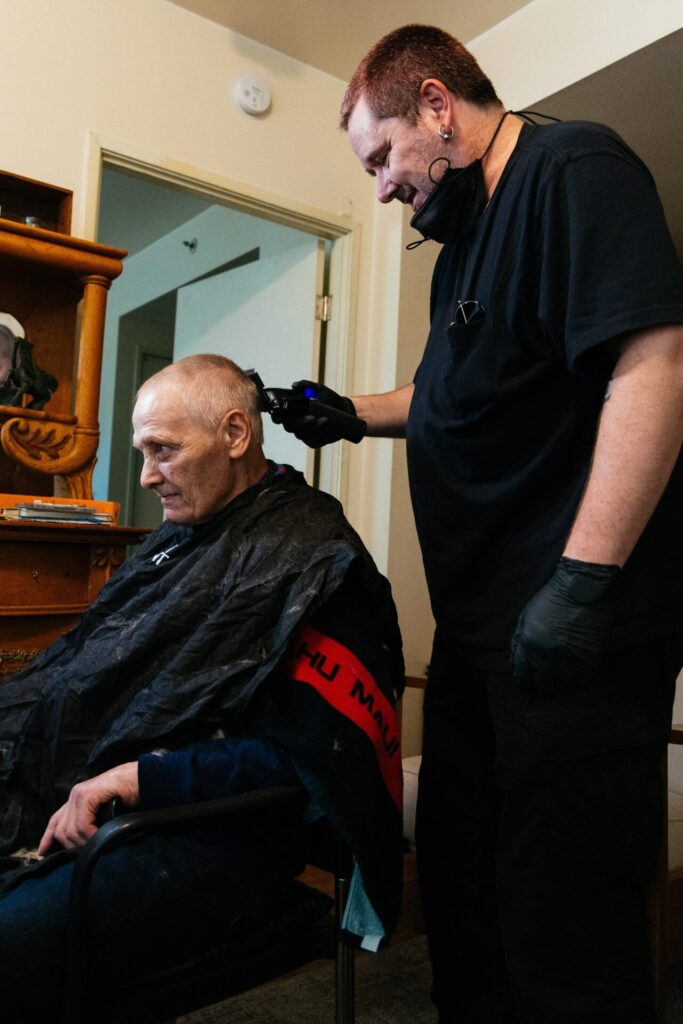
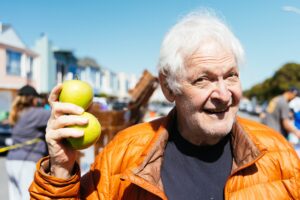 Once a week, a familiar face stops by a neighborhood food pantry in the Richmond district for an afternoon volunteer shift: coordinating the check-in process, breaking down cardboard, and helping share groceries with hundreds of neighbors each week.
Once a week, a familiar face stops by a neighborhood food pantry in the Richmond district for an afternoon volunteer shift: coordinating the check-in process, breaking down cardboard, and helping share groceries with hundreds of neighbors each week. 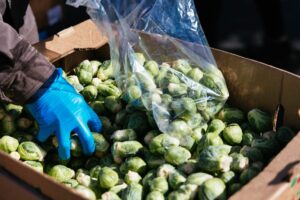 sense that “the sky was falling.”
sense that “the sky was falling.” 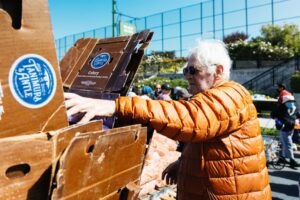 Gary lives on his pension income – so even before record inflation hit, his pre-pandemic grocery routine involved walking to a variety of stores and markets to get the best deals and buy food in bulk. The health risks of the pandemic made this routine impossible for him, but home-delivered Food Bank groceries helped Gary offset the pressure on his budget and stay nourished with fresh vegetables.
Gary lives on his pension income – so even before record inflation hit, his pre-pandemic grocery routine involved walking to a variety of stores and markets to get the best deals and buy food in bulk. The health risks of the pandemic made this routine impossible for him, but home-delivered Food Bank groceries helped Gary offset the pressure on his budget and stay nourished with fresh vegetables. 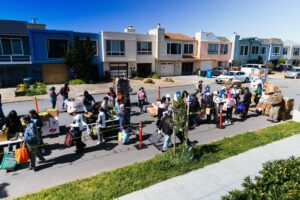 network of support – friends, neighbors and groceries from the Food Bank – Gary was able to stay healthy and safe during the height of the pandemic. But he knows not everyone had that good fortune.
network of support – friends, neighbors and groceries from the Food Bank – Gary was able to stay healthy and safe during the height of the pandemic. But he knows not everyone had that good fortune.
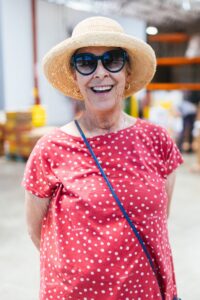 Carolyn Golden’s relationship with the Food Bank goes way back – back to the beginning, in fact. Prior to the merge of the Marin Food Bank and the San Francisco Food Bank in 2011, Carolyn saw an advertisement in the newspaper for a Marin Food Bank food drive.
Carolyn Golden’s relationship with the Food Bank goes way back – back to the beginning, in fact. Prior to the merge of the Marin Food Bank and the San Francisco Food Bank in 2011, Carolyn saw an advertisement in the newspaper for a Marin Food Bank food drive.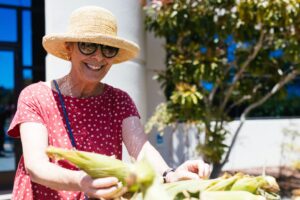 network of 350 partner organizations across San Francisco and Marin, the quality and scale of Food Bank operations has grown drastically. Through it all, Carolyn’s partnership has grown alongside it.
network of 350 partner organizations across San Francisco and Marin, the quality and scale of Food Bank operations has grown drastically. Through it all, Carolyn’s partnership has grown alongside it. 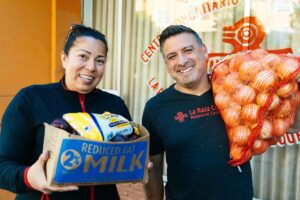
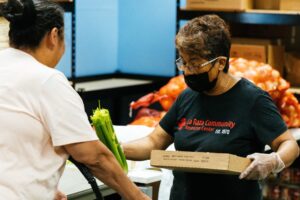
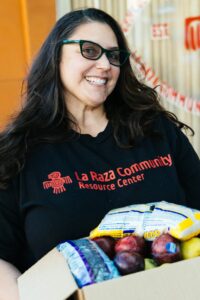
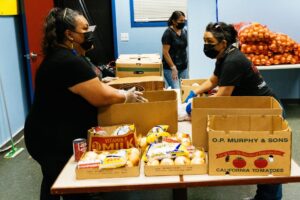
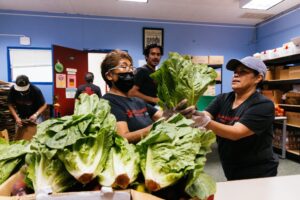
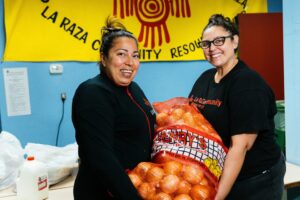
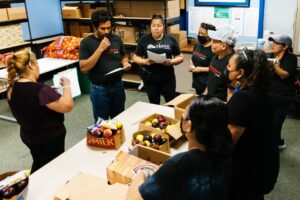

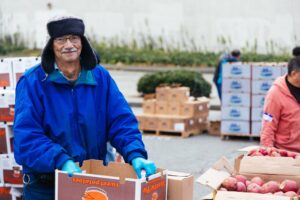 Volunteering with the Food Bank in May 2020 was really a no-brainer for Mitchell. As a retired government worker for various public health agencies, he already had a deep knowledge of epidemics and health outbreaks. Combined with the driving force of his faith, Mitchell knew he wanted to help his community out during a difficult and pivotal time.
Volunteering with the Food Bank in May 2020 was really a no-brainer for Mitchell. As a retired government worker for various public health agencies, he already had a deep knowledge of epidemics and health outbreaks. Combined with the driving force of his faith, Mitchell knew he wanted to help his community out during a difficult and pivotal time.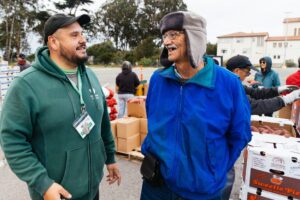
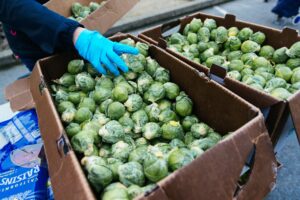 a pallet and put it on the table. And I will be 80 years old in July!”
a pallet and put it on the table. And I will be 80 years old in July!”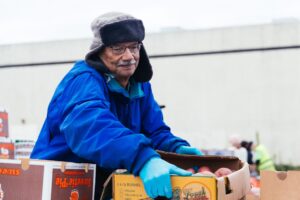 way to ensure we can continue meeting the immediate needs of our neighbors while strategically planning for more long-term, holistic solutions in the future. Thank you, Mitchell, for your dedication to ending hunger in San Francisco and Marin! We can’t do this work without supporters like you.
way to ensure we can continue meeting the immediate needs of our neighbors while strategically planning for more long-term, holistic solutions in the future. Thank you, Mitchell, for your dedication to ending hunger in San Francisco and Marin! We can’t do this work without supporters like you.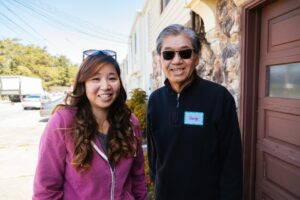
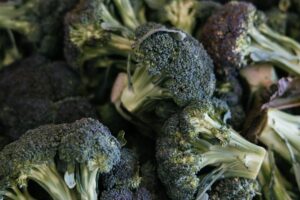 about his health and also wanted to make sure that he didn’t lose access to the pantry’s services if he was still in need of the food. That’s when I remembered that included in the handwritten card that his granddaughter had given me, was her mom’s contact info.
about his health and also wanted to make sure that he didn’t lose access to the pantry’s services if he was still in need of the food. That’s when I remembered that included in the handwritten card that his granddaughter had given me, was her mom’s contact info. 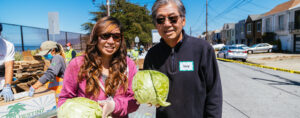
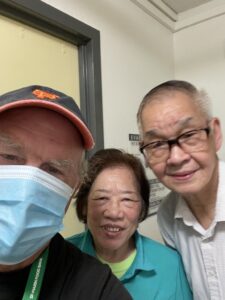 After working in the warehouse and at different Food Bank pantries during the early pandemic, Nick signed up to home-deliver groceries to seniors, families with young children, folks with disabilities and other neighbors who weren’t able to make it to a traditional pantry but still needed food. His shift took him all throughout the city — including neighborhoods that he, after many years of living in San Francisco, had never been to before.
After working in the warehouse and at different Food Bank pantries during the early pandemic, Nick signed up to home-deliver groceries to seniors, families with young children, folks with disabilities and other neighbors who weren’t able to make it to a traditional pantry but still needed food. His shift took him all throughout the city — including neighborhoods that he, after many years of living in San Francisco, had never been to before. 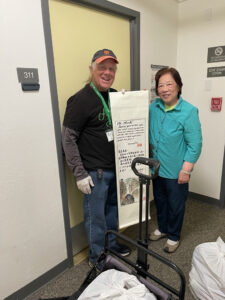 couple on his delivery route, sticks out for Nick above the rest.
couple on his delivery route, sticks out for Nick above the rest.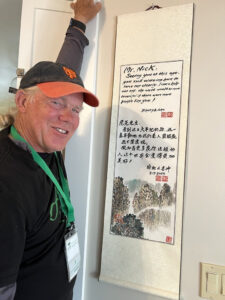 “I am humbled by all the effort behind me, by all the people at the Food Bank who make this happen. That’s the extraordinary part of this. The people who are out there on the curb in all kinds of weather, loading groceries into people’s cars, people who are working in the warehouse day after day, that’s not exactly the easiest thing to do,” he said. “I’m just the delivery boy.”
“I am humbled by all the effort behind me, by all the people at the Food Bank who make this happen. That’s the extraordinary part of this. The people who are out there on the curb in all kinds of weather, loading groceries into people’s cars, people who are working in the warehouse day after day, that’s not exactly the easiest thing to do,” he said. “I’m just the delivery boy.”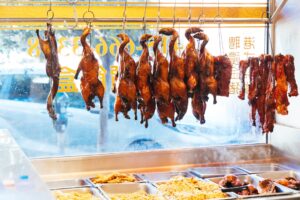 below. Next door, another restaurant dishes up steaming, juicy xiao long bao.
below. Next door, another restaurant dishes up steaming, juicy xiao long bao.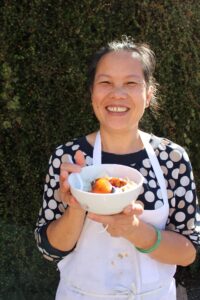 down restaurants all over the Bay Area and put her and thousands of others out of work. As a single parent raising a high schooler, putting another daughter through college, and helping support her eldest daughter at the time, Ming needed some support of her own. Ever since, these weekly groceries from the pantry near her work have remained a crucial time- and money-saver for this busy mom.
down restaurants all over the Bay Area and put her and thousands of others out of work. As a single parent raising a high schooler, putting another daughter through college, and helping support her eldest daughter at the time, Ming needed some support of her own. Ever since, these weekly groceries from the pantry near her work have remained a crucial time- and money-saver for this busy mom. 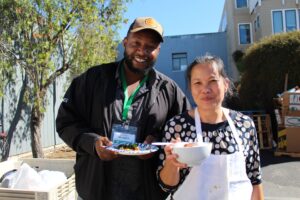 volunteers make their way over, dishing up portions buffet-style and gathering around the foldout table. Turns out, it’s not only Ming’s family that she’s bringing together over food.
volunteers make their way over, dishing up portions buffet-style and gathering around the foldout table. Turns out, it’s not only Ming’s family that she’s bringing together over food.
Share